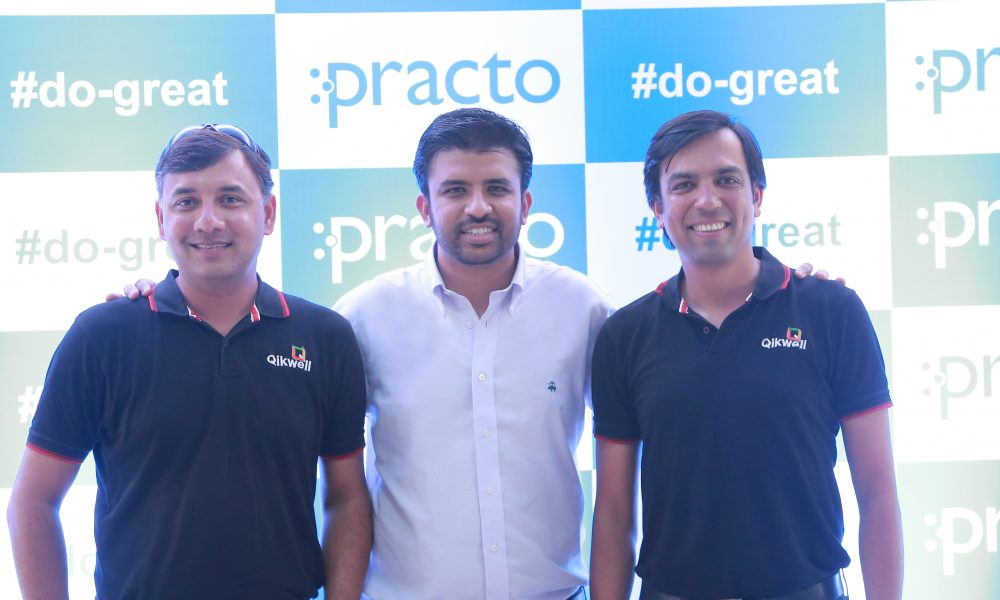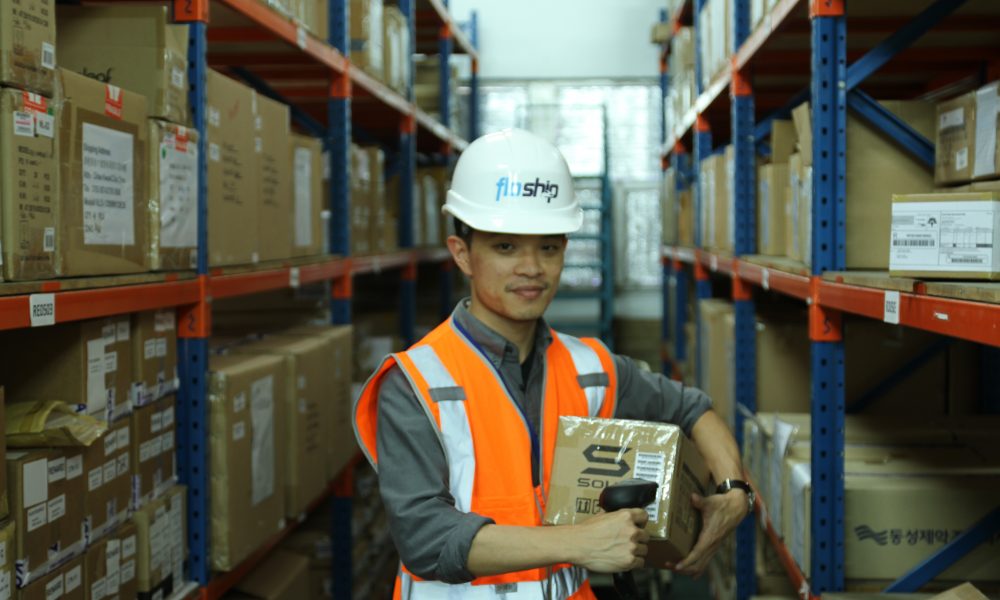Category: Startup
IdeaSpace launches 2017 Philippines startup competition
IdeaSpace Foundation, an early-stage technology incubator and accelerator in the Philippines has formally launched its National Startup Competition for 2017 and has begun accepting innovative technology ideas.
IdeaSpace is a non-profit foundation backed by First Pacific, Metro Pacific Investments Corp (MPIC), Metro Pacific Tollways Corp (MPTC), MPIC hospital group, PLDT, Meralco, Smart Communications, Maynilad, Voyager Innovations, and PayMaya Philippines.
On its fifth year, the 2017 IdeaSpace National Startup Competition will be increasing its finalist quota, accepting 15 startups instead of the usual 10, into the final acceleration process.
The acceptance of more startups is part of IdeaSpace’s efforts to expand and accommodate the local startup ecosystem, which it noted has seen robust growth over the past four years.
“We’ve seen very inspiring stories of startup founders joining IdeaSpace over the years, from husband-and-wife tandems to students looking to make their own mark in the world,” said the Executive Director of IdeaSpace, Diane Eustaquio.
“This year, we’re looking to extend our support to more startup founders with burning passion for starting up their own business and helping the country progress with the help of technology and innovation,” she adds.
All 15 startups that make it to the finals next year will receive an equity fee funding of PHP 500,000, which translates to an approximate amount of US$ 10,000.
Besides, the teams will also receive support for housing, transportation, incorporation, office space, communication, software, classes and training, as well as mentorship from executives under First Pacific companies, the total value of which amounts to more than PHP 1 million.
However, IdeaSpace will not have a stake in their early-stage startups.
Newly appointed IdeaSpace president Butch Meily said the foundation has been extending its capacity into a – full ecosystem support. This is to ensure that most of the startups are guided every step of the way.
“We’ve realized over the years that startups need as much support as they can get in every step of the process, from bringing their ideas to life to launching them into the market, and even to making their startups grow further,” Meily explains.
But aside from incubation and acceleration programs, IdeaSpace has also been an avid supporter of startup community events in the country and overseas, such as the annual Geeks on a Beach conference, the Slingshot MNL programme by the Department of Trade & Industry, as well as the DLD Tel Aviv Innovation Festival.
Since launching in 2012, IdeaSpace has incubated and funded a total of 52 startups, some of which have grown and evolved into large businesses and enterprises such as PinoyTravel and TimeFree Innovations.
Interested individuals or groups may submit their unique startup ideas by logging on to apply.ideaspacefoundation.org. Deadline for submission of ideas is on January 12, 2017.
By Vivian Foo, Unicorn Media
Singapore-based e-commerce enabler Shopmatic buys technology consulting firm 5X Ruby
Singapore-based e-commerce enabler Shopmatic has announced its acquisition of a majority stake in Taiwan-based technology consulting firm, 5X Ruby on Thursday.
According to the details of the agreement, Shopmatic has acquired 51% stake in 5X Ruby in a mixed cash-and-stock deal for an undisclosed amount. The latter’s valuation was also not disclosed.
The move on Shopmatic’s part is aimed at strengthening its platform development team, in order to provide its customers a streamlined experience backed by the latest technology stack.
“We plan on developing value-added services for our customers including inventory management service, integrate payments on the platform, aggregation, and taxation. For these services, we will be using the technology from 5X Ruby. Some of the 20-member team of the company will be working with Shopmatic’s lab to design these solutions.” Anurag Avula, the co-founder of Shopmatic said.
Founded in December 2014 by Anurag Avula, Yen Ti Lim, and Kris Chen, Shopmatic is an international e-commerce platform, launched with the intent to help anyone wanting to sell online.
In other words, it aims to help merchants and individuals manage everything that is required for them to grow their business in the virtual world, that is from assisting managing merchants to develop their own unique web-store to aiding them with insights on how to sell online.
Besides building websites, Shopmatic also helps integrate payment gateways, establish partnerships with logistics companies, and facilitate listings in marketplaces and social media. The service also includes a backend analytics platform.
On the other end, 5X Ruby has been the at the forefront of technical consultation and training. The firm has built a vibrant and growing Ruby developer community in Taiwan catering to high-tech clients from Japan, Hong Kong & Taiwan developing web and mobile applications.
The technology company in-house software Ruby on Rails is a server-side web application development format written in Ruby 5X held under the MIT License. The system acts as a model-view-controller framework which uses less code and provides default structures for a database, a web service, and web pages.
The Taiwanese firm, in turn, lies in sync with Shopmatic’s aspirations to deploy the latest technologies and simplify the process for those who intends to take their business online, without the requirement for technical knowledge.
Besides, the acquisition will also facilitate the company’s international market expansion plans, which aims to target markets outside Singapore by early 2017, particularly to strengthen its presence in other South Asian markets such as Japan.
“This acquisition will not only enable us to strengthen our stance as the leading platform that enables businesses to go online but also to scale and enter new markets at a faster pace. We welcome the 5xRuby team into the Shopmatic family and are excited about the opportunity of working with a world-class development team,” said Anurag Avula.
In 2015, Singapore-headquartered Shopmatic has launched its operations in Gurgaon and Bangalore in India. The company has also launched a mobile app, earlier last month for Indian Sellers called Go, which is an easy tool to create an e-commerce website in less than two minutes with three easy steps. Reportedly 85-90% of Shopmatic’s business comes from India.
By Vivian Foo, Unicron Media
Airbnb to increase fundraising round to US$ 1 billion
Airbnb Inc has authorised the sale of an additional US$153 million in Series F shares, bringing the size of its current fundraising effort to about US$1 billion, according to Tech Crunch.
This was suggested by a new Delaware filing for Airbnb on Friday, identified by research firm CB Insights. The amount comes as an extension to their financing US$555 million round back in September 2016.
With the latest round, the filing prices the shares at US$105, which is consistent with the financing values the home-rental startup said at about US$30 billion.
Details of the equity are still unknown and it is not clear which investors might be getting these shares or if the round is even confirmed.
Dating back to its founding in 2008, Airbnb has raised more than US$3 billion in capital. Previous Airbnb backers include Google Capital, Technology Crossover Ventures, GGV Capital and Sequoia Capital.
The San Francisco-based company has secured a US$1 billion debt facility this year from banks including JPMorgan Chase & Co, Citigroup Inc, Bank of America Corp and Morgan Stanley.
The company also used some of its capital to buy back shares from Morgan Stanley this year.
Airbnb does not have a comment on the filing.
By Vivian Foo, Unicorn Media
Practo makes fifth acquisition, buys analytics startup Enlightiks for US$13.9 million
Practo Technologies Pvt. Ltd, a web-based clinic management software developer, has today announced the acquisition of US-based advanced analytics firm Enlightiks Inc. and its Indian operations in a cash-and-stock deal.
The deal, which details the acquisition of Bengaluru-based Enlightiks Business Solutions Pvt. Ltd, an advanced analytics platform offering business intelligence solutions to healthcare enterprises, is valued at Rs 92 crore (about US$13.9 million).
Post acquisition, the entire 50 member team of Enlightiks will join Practo and form part of an analytics business unit within the company. The unit is said to be headed by Enlightiks co-founder and CEO, Vamsi Chandra Kasivajjala.
This is Practo 5th acquisition till date and its 3rd in the enterprise space. In 2015, the company has acquired four companies – hospital information management solution provider Insta Health for US$12 million, hospital appointment scheduling firm Qikwell, a web and app-based fitness management platform FithoWellness as well as product outsourcing firm Genii.
The primary offering for Enlightiks comes through its proprietary business intelligence and predictive analytics platform – Querent which provides actionable insights for healthcare providers using complex mathematical, statistical, computational and cognitive models.
“This brings Practo closer to its vision of simplifying healthcare by providing end-to-end solutions for the entire eco-system,” said Shashank ND, the Founder & CEO of Practo. “With Querent, we will be able to help CXOs make their enterprises run more efficiently which should improve the overall quality of care while making it more affordable.”
Enligtiks was co-founded in 2012 by Shilpa Peri, Venkatesh Pagidimarri, Dr. Bas Nair and Vamsi Chandra Kasivajjala. The founding team was later joined by Shaunak Joshi and Sunil Kondala.
Their business intelligent solution Querent is capable of providing accurate predictions for key business metrics which will aid enterprises in proactive decision-making that can help create a positive impact on short to medium term business actions.
Besides, the platform also has an ability to read both structured and unstructured information and apply advanced machine learning and deep learning techniques to uncover hidden insights. Querent also facilitates visual interpretation of the collected information in order to generate useful insights for healthcare enterprises across various departments including operations, finance, quality, pricing, marketing, customer management and risk assessment.
More than 200 healthcare centers including hospitals and clinics across the nation are currently using this platform. The list of clients includes names such as Apollo Sugar Clinics Ltd, Kokilaben Dhirubhai Ambani Hospital, Inamdar Multispecialty Hospital, Fernandez Hospitals Pvt Ltd, Eye-Q Vision Pvt Ltd, Sparsh Sandor Nephrocare Services Pvt Ltd, Ramesh Hospitals and more.
While founded in 2008 by Shashank ND and Abhinav Lal, Practo is one of the most well-funded healthcare startups in the country whereby the company has more than US$120 million in funds.
The company raised $90 million in August 2015 through a Series C funding led by Chinese media and technology conglomerate Tencent Holdings Pvt Ltd. It raised $30 million in a Series B round from Sequoia India and Matrix Partners in February 2015. While in 2012, Practo had raised $4.6 million from Sequoia Capital in a Series A funding round.
The firm helps patients book appointments with doctors online and also enables doctors in primary clinics and hospitals to manage patient records under a software-as-a-service (SaaS) model. Practo also facilitates online delivery of medicines, e-consultation and beauty and wellness products.
Commenting on the M&A, co-founder of Enlightiks, Vamsi said “Enlightiks is thrilled to join Practo. We share the same passion for democratising healthcare access for billions of people where business intelligence and analytics are critical.”
“We chose Practo so that we can collaborate and work towards offering superior, comprehensive and integrated solutions for healthcare providers. I look forward to working with Shashank and the Practo team in realising our shared vision of transforming healthcare,” he adds.
By Vivian Foo, Unicorn Media
Global ecommerce startup Floship bags US$3.5 million funding round
Hong Kong provider of global logistics and fulfillment startup Floship Global Ecommerce Fulfillment recently announced that the company has successfully closed a pre-series A US$3.5 million bridge funding round earlier this December.
This fundraising was participated by Taiwan’s early stage technology-focused Cherubic Ventures, Hong Kong’s Big Boom and Empiricus Capital, as well as China’s Regent Capital.
“We are grateful for the investment of Ardent Capital and Vectr Ventures in earlier funding rounds, and our team is honored to be working with such respected investors as Cherubic Ventures, Big Bloom Capital, Empiricus Capital, and Regent Capital during this most recent round,” said Steve Suh, a Co-Founder of Floship.
Providing global e-commerce fulfillment directly from Hong Kong, Floship leverages on the strategic location of Hong Kong as the world’s number one air cargo hub, providing e-commerce vendors to compete in more markets from one centralized fulfillment warehouse.
“We are beyond excited about the results of our latest funding round. As our company continues to experience growth and gain positive traction in the marketplace, we could not be more thrilled about the validation we have gained from those who have made the decision to invest in our e-commerce fulfillment model,” said Steve Suh.
With the funds, Floship plans to accelerate the service improvements of their technology as well as increasing business expansion efforts through providing clients with seamless integration to ever more e-commerce platforms.
Besides, as Floship’s current technology integrates with Shopify, WooCommerce, Magento, Dear Systems, and Aftership, the company is committed to building more integrations to shopping carts to serve more customers on a wider variety of e-commerce platforms.
Thus, the Floship’s team will also be working on accelerating the development of algorithms that help optimize shipping rates on a per package basis as well as building a set of tools to make it easier for online retailers to manage their daily global fulfillment at scale.
“As a leader in our industry, we differentiate ourselves by providing a highly automated fulfillment experience for online retailers utilizing multiple couriers to obtain the best rates for global e-commerce shipping.” Steve Suh explains.
To date, Floship has completed fulfillment for more than 100 crowdfunding campaigns, some of which have been the most successful in the world.
“But still, as a startup company that doesn’t have the luxury of standing still, we are always striving to improve. This latest funding round will allow us to do just that.” adds Steve Suh.
By Vivian Foo, Unicorn Media





